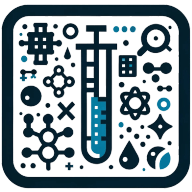9 Does Drug Testing Really Deter Workplace Drug Use?
Navigating the complexities of workplace drug testing just got easier. This article delves into the heart of the debate, armed with insights from leading experts who dissect the effectiveness, challenges, and best practices of drug testing in the modern workplace. Uncover the layers of this contentious issue and learn how to strike the right balance between safety and dignity.
- Evolving Drug Landscape Challenges Testing Effectiveness
- Supportive Policies Enhance Drug Testing Deterrence
- Balancing Safety and Dignity in Workplace Testing
- Drug Testing Boosts Safety in Tree Services
- Tailored Approaches Needed for Effective Drug Policies
- Consistent Enforcement Crucial for Deterrent Effect
- Alternative Strategies May Surpass Traditional Testing Methods
- Privacy Concerns Impact Drug Testing Effectiveness
- New Substances Challenge Traditional Testing Methods
Evolving Drug Landscape Challenges Testing Effectiveness
Workplace Drug Testing in the Era of Evolving Recreational Drug Use
The evolving landscape of recreational drug use poses significant challenges to workplace drug testing methodologies. With the emergence of new substances and changes in consumption patterns, traditional tests may struggle to keep pace.
In my experience, I've seen this firsthand when a colleague tested positive for a substance not covered by our standard screening panel, highlighting the limitations of our current approach.
Moreover, the increasing normalization of certain drugs, like cannabis, in many jurisdictions further complicates matters, as legal and ethical considerations come into play.
This necessitates a reevaluation of testing strategies, perhaps incorporating broader panels or more frequent testing, to effectively address the shifting landscape of recreational drug use while maintaining a safe and productive work environment.

Supportive Policies Enhance Drug Testing Deterrence
In my experience, drug testing can serve as an effective deterrent when it's part of a broader, supportive workplace policy. When combined with initiatives like employee wellness programs, counseling services, and clear communication about the testing process, it not only discourages drug use but also helps identify individuals who might benefit from assistance. However, relying solely on drug testing without these supportive measures can create an atmosphere of distrust and potentially overlook the underlying issues that lead to substance use.
For example, at one organization, we implemented a program that paired random drug tests with proactive support services. This balanced approach led to a noticeable reduction in drug-related incidents and fostered a more open dialogue about health and well-being. The key is to ensure that drug testing is perceived as a fair and transparent tool--not a punitive measure--thereby encouraging a healthier, more accountable work environment.
Balancing Safety and Dignity in Workplace Testing
One thing I wish more people understood about workplace drug testing is the balance between maintaining a safe, productive work environment and respecting employees' privacy and dignity. Drug testing is often seen as a necessary tool for safety, especially in industries like construction, transportation, or healthcare, where impairment could lead to serious consequences. However, the process can feel invasive or stigmatizing if not handled properly, which can lead to distrust or low morale. The key is to approach it with transparency, consistency, and fairness, ensuring employees understand why it's in place and how it benefits everyone. Education and clear communication are essential for creating a culture of trust around such policies.
In my own experience managing a team in the gardening and landscaping industry, where machinery and tools play a major role, safety is paramount. We introduced a drug and alcohol policy not because we assumed the worst about anyone but because it was a proactive way to ensure our team and clients were protected. I made it a priority to involve employees in discussions about why the policy was being introduced and how it would be implemented. My years of leadership and problem-solving skills helped me guide those conversations, ensuring everyone felt heard and understood. As a result, we saw a positive shift in how the team approached safety and accountability, which ultimately strengthened our workplace culture and protected our reputation with clients. It was a win-win because the process not only enhanced safety but also built trust within the team.
Drug Testing Boosts Safety in Tree Services
At Ponce Tree Services, we have always placed a high priority on safety due to the inherently dangerous nature of tree care work. Early in my career, I introduced a comprehensive drug testing policy after noticing a few minor accidents on job sites that seemed to be linked to impaired judgment. With more than 20 years of experience and my certification as an arborist, I knew that maintaining a safe work environment was not just about the right equipment or techniques but also ensuring that everyone was physically and mentally prepared for the job.
After implementing the drug testing policy, we saw a significant decrease in workplace incidents as employees became more aware of their responsibilities and the importance of staying fit for the job. This change also boosted productivity, as teams were more focused and tasks were completed faster without sacrificing safety. The policy helped us not only reduce accidents but also instilled a culture of accountability. My experience in the industry allowed me to foresee the risks and tailor a policy that worked effectively without alienating our team.

Tailored Approaches Needed for Effective Drug Policies
The effectiveness of drug testing in deterring workplace drug use varies significantly across different industries and substances. Some sectors, such as transportation and healthcare, may see more substantial benefits from drug testing programs due to safety-critical nature of their work. However, the impact can be less pronounced in other fields. The types of substances being tested for also play a role, as some drugs are more easily detected than others.
This variability in effectiveness highlights the need for tailored approaches to workplace drug policies. Companies should carefully evaluate their specific needs and risks before implementing a drug testing program. Consider conducting a thorough assessment of your industry's unique challenges to determine if drug testing is the most effective deterrent for your workplace.
Consistent Enforcement Crucial for Deterrent Effect
The deterrent effect of workplace drug testing is closely tied to consistent enforcement and clear consequences. When employees know that drug tests are conducted regularly and that failing a test leads to specific repercussions, they are more likely to abstain from drug use. However, if testing is sporadic or consequences are not consistently applied, the deterrent effect can be significantly diminished. The perception of fairness in the testing process also plays a crucial role in its effectiveness as a deterrent.
Employees who view the policy as equitable and necessary are more likely to comply. To maximize the deterrent effect, organizations should establish clear, fair policies and communicate them effectively to all employees. Take the time to review and update your drug testing policies to ensure they are both consistent and fair.
Alternative Strategies May Surpass Traditional Testing Methods
Alternative strategies to drug testing may prove more successful in creating a drug-free workplace environment. These approaches often focus on prevention, education, and support rather than punitive measures. Employee assistance programs, for instance, can provide confidential counseling and resources for those struggling with substance abuse. Comprehensive wellness initiatives that address stress management and mental health can also help reduce the likelihood of drug use.
Additionally, fostering a positive workplace culture that promotes open communication and trust may encourage employees to seek help voluntarily. These strategies can be more cost-effective and less invasive than traditional drug testing methods. They also have the potential to address the root causes of workplace drug use rather than just detecting its occurrence. Consider implementing a holistic approach to workplace drug prevention that goes beyond testing.
Privacy Concerns Impact Drug Testing Effectiveness
Privacy concerns surrounding drug testing can significantly impact its effectiveness as a deterrent. Many employees view drug testing as an invasion of their personal privacy, especially when it involves monitoring off-duty behavior. This perception can lead to decreased morale, increased stress, and a breakdown in trust between employees and management. In some cases, privacy concerns may even deter qualified candidates from applying for positions in companies with strict drug testing policies.
The legal landscape surrounding privacy rights and drug testing is also constantly evolving, which can create challenges for employers. Balancing the need for a safe workplace with employees' right to privacy requires careful consideration. Organizations should stay informed about current privacy laws and employee rights related to drug testing. Evaluate your current drug testing practices to ensure they respect employee privacy while still meeting safety requirements.
New Substances Challenge Traditional Testing Methods
The rapidly evolving drug landscape poses significant challenges to traditional workplace drug testing methods. New synthetic drugs and novel consumption methods are continually emerging, making it difficult for standard tests to keep pace. Additionally, the increasing legalization of marijuana in many regions complicates the interpretation of positive test results, as traces of the drug can remain in a person's system long after the impairing effects have worn off. The rise of prescription drug abuse also presents challenges, as employees may have valid prescriptions for substances that can impair job performance.
These factors can reduce the reliability and relevance of traditional drug tests as deterrents. Furthermore, the costly and time-consuming nature of constantly updating testing protocols to address new substances can be burdensome for employers. To address these challenges, stay informed about the latest developments in drug testing technology and legal regulations. Consider partnering with occupational health experts to develop a more comprehensive and up-to-date approach to workplace drug policy.



